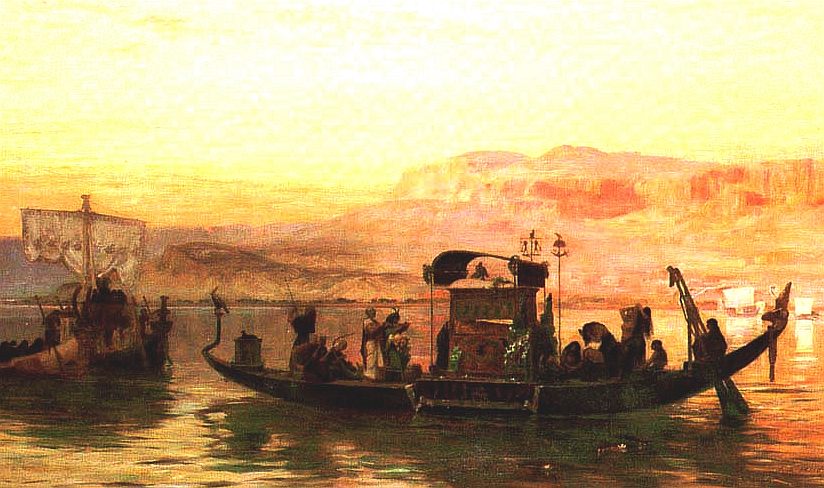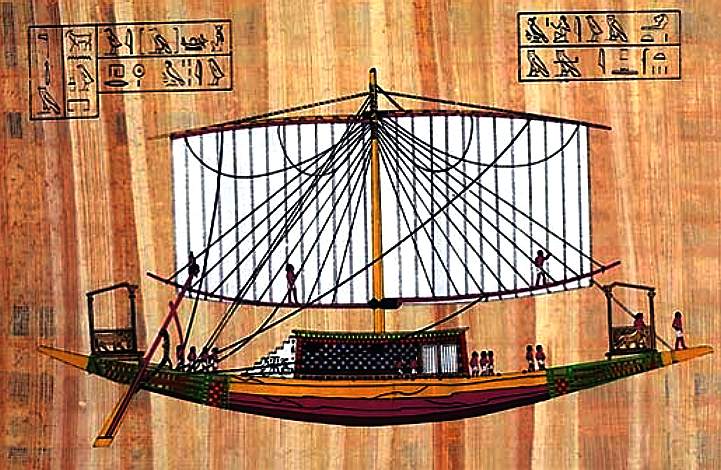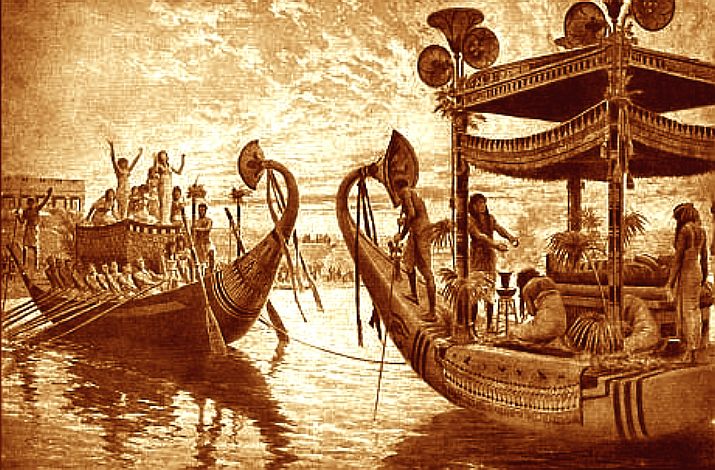Cleopatra
was the last pharoah of Egypt.
Cleopatra VII Philopator (Ancient Greek: Κλεοπάτρα Φιλοπάτωρ; Late 69
B.C.E. – August 12, 30 B.C.E.), known to history as
Cleopatra, was the last pharaoh of Ancient Egypt.
She was a member of the Ptolemaic dynasty, a family of Greek origin that ruled Egypt after Alexander the Great's death during the Hellenistic period. The Ptolemies, throughout their dynasty, spoke
Greek and refused to speak Egyptian, which is the reason that Greek as well as Egyptian languages were used on official court documents such as the Rosetta
Stone. By contrast, Cleopatra did learn to speak Egyptian and represented herself as the reincarnation of an Egyptian goddess, Isis.
Cleopatra originally ruled jointly with her father Ptolemy XII Auletes and later with her brothers, Ptolemy XIII and Ptolemy XIV, whom she married as per Egyptian custom, but eventually she became sole ruler. As pharaoh, she consummated a liaison with Julius Caesar that solidified her grip on the throne. She later elevated her son with Caesar, Caesarion, to co-ruler in name.
After Caesar's assassination in 44 B.C.E., she aligned with Mark Antony in opposition to Caesar's legal heir, Gaius Julius Caesar Octavianus (later known as Augustus). With Antony, she bore the twins Cleopatra Selene II and Alexander Helios, and another son, Ptolemy Philadelphus. Her unions with her brothers produced no children. After losing the Battle of Actium to Octavian's forces, Antony committed suicide. Cleopatra followed suit, according to tradition killing herself by means of an asp bite on August 12, 30
B.C.E.. She was briefly outlived by Caesarion, who was declared pharaoh by his supporters, but he was soon killed on Octavian's orders. Egypt became the Roman province of Aegyptus.
To this day, Cleopatra remains a popular figure in Western culture. Her legacy survives in numerous works of art and the many dramatizations of her story in literature and other media, including William Shakespeare's tragedy Antony and Cleopatra, Jules Massenet's opera Cléopâtre and the film Cleopatra (1963). In most depictions, Cleopatra is portrayed as a great beauty, and her successive conquests of the world's most powerful men are taken as proof of her aesthetic and sexual appeal. In his Pensées, philosopher Blaise Pascal contends, evidently speaking ironically because a large nose has symbolized dominance in different periods of history, that Cleopatra's classically beautiful profile changed world history: "Cleopatra's nose, had it been shorter, the whole face of the world would have been
changed."

Queen
Cleopatra's royal barge, last of the Pharoahs


Egyptian
boat building - Khufu's royal barge - solar boat for the
afterlife
Seagoing
vessels
River
boats
Solar
ships and funerary boats
Early
ship construction and Khufu's solar boat
Navigable
canals
Voyages
of exploration
Index
of Topics
Main
Index and Search Page
[1]
Abydos boats
[2]
Helmsman on a boat in the tomb of Niankh-Pepi and Pepi-ankh
[3]
A Funerary Statuette of Hekaemsaf, Chief of the Royal Ships
in the Saitic Period by Gun Björkman
History
and archaeology of the ship - lecture notes by John Illsley
Ships
in Egypt: Pottery with pictures of ships (Naqada Period),
Timbers from Tarkhan, Old Kingdom scenes, wooden models (
Site of the UCL)
Bibliography
for preclassical seafaring
A
Selection of Model Boats from the tomb of Meketre.
The
lighthouse of Alexandria
Desert
Boats, Petroglyphs in the Eastern Desert
Abydos
Boat
Archaeologists
unearth Pharaonic solar barge
The
Ships of Antiquity
The
Carnegie Boat
After
5,000 year voyage, world's oldest built boats deliver
Valentine's
Day Cleopatra
Helen of
Troy Latin
Greek
Mythology Cleopatra
Pictures Rome
Ancient
Greece
Egypt
Indus
Valley Persian
Empire Judea
- Israel Queen
Cleopatra of Egypt
Documentaries
on Ancient Egypt Lower
Egypt Giza
Introduction
Pyramids
Tombs
The
Sphinx Solar
Boat Museum Upper
Egypt Middle
Egypt
The
design of Solar Navigator's figure
head is partly inspired by their beautiful Egyptian
Queen, Cleopatra.




